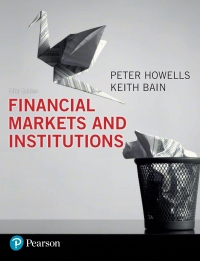Use the following to answer the next 4 questions. Background: On January 1, Year 10, Bandar Corp. (a banana provider) purchased 50,000 common shares giving them 25% ownership in Haathee Inc. (a peanut plant) for $687,500. The investment was classified as a fair value investment with the intention to sell within a year. In Year 10, Haathee Inc. reported a net income of $90,000 and declared and paid dividends of $50,000. Bandar Corp. noticed that Haathee Inc.'s common shares were trading at $16.00 per share on December 31, Year 10. Question 1: CEO: I've been reviewing the financial statements for Year 10. Why isn't the Investment in Haathee Inc. reported as a long-term investment? Select the BEST answer. Question 1: CEO: I've been reviewing the financial statements for Year 10. Why isn't the Investment in Haathee Inc. reported as a long-term investment? Select the BEST answer. 3. When a company has between 20% to 50% ownership in another company (i.e. we have 25% ownership in Haathee Inc.), the investment is automatically reported as a Long-term Investment. We will make the correction immediately. Ob. We became aware of a revolutionary peanut pealing machine for Haathee inc. at a purchase price of $100,000. However, when we brought this information forward to Haathee Inc., we were unable to persuade them (and the majority shareholder) to make this purchase. Instead there is intent to sell the investment in the foreseeable future. These conditions make the investment a current asset. Dc. The investment should have been classified as a Long-Term investment. Having 25% ownership in Haathee inc., Bandar Corp. will have disposed of this asset by next year. Further. since Bandar Corp. does not have the ability to significantly influence Haathee inc's operating, investing and financing activities classifies this also classifies the investment as long-term. Dd. From a reporting point of view, the investment in Haathee inc. could be reported either as a current or as a long-term asset. As long as the investment is reported on the balance sheet, in the asset section, we are following IFRS. Question 2: CEO: I really do not understand what it means to have significant influence over an investment. Which is the best answer that explains it to me. Select the BEST answer. Da. As a general rule, when one company owns up to 20% ownership of the other company, it generally means that the investor can influence how to advertise and sell products, can influence to make capital asset purchases, and/or influence to obtain financing. Db. IFRS suggests that when there is significant influence, either the fair value through net income (or profit and loss) method or the fair value through OCI method can be used to manage the investment. . From a reporting point of view, when one entity has significant influence over another, the pro-rata share of dividend income is reported as Other Revenues and Expenses on the Income Statement. Dd. When one company owns a significant portion of another company but not enough to have control, that company is said to have significant influence over the operating, investing and financing policies of the investee. Question 3: CEO: Let us assume that the Investment in Haathee Inc. is classified as a FV-NI (or FVTPL) investment. How will our Income Statement appear on December 31, Year 10? a. Other Revenues Expenses: Investment or Dividend income: 25% of Haathee Inc's Dividends $12,500 Other Comprehensive income Investment income: Change in fair value: ($800,000$687,500)112,500 Db. Other Revenues Expenses: Investment or Dividend income: 100% of Haathee Inc's Dividends $50,000 Investment income: Change in fair value: ($800,000$687,500)112,500 Dd. Other Revenues Expenses: Investment or Dividend income: 25% of Haathee inc's Dividends $12,500 Investment income: Change in fair value: ($800,000$687,500)112,500 Question 4: CEO: Assume that the Equity Method is being used on the Investment in Haathee Inc in Year 10. I've prepared some journal entries. Which journal entry(s) that I prepared is (are) CORRECT? Select ALL that apply. Dec 31 DR Cash 12,500 / CR Investment in Haathee inc. 12,500 25% of Haathee Inc's Dividends Db. Dec 31 DR Investment in Haathee inc. 112,500 / CR OCI: Unrealized Gain 112,500 Change in fair value: $800,000$687,500 Dc. Jan 1 DR Investment in Haathee Inc. 687,500 / CR Cash 687,500 Purchase of investment Dd. Dec 31 DR Investment in Haathee Inc. 112,500/ CR Investment income 112,500 Change in fair value: $800,000$687,500 De. Dec 31 DR Cash 12,500 / CR Dividend (or Investment) Income 12,500 25% of Haathee Inc's Dividends











